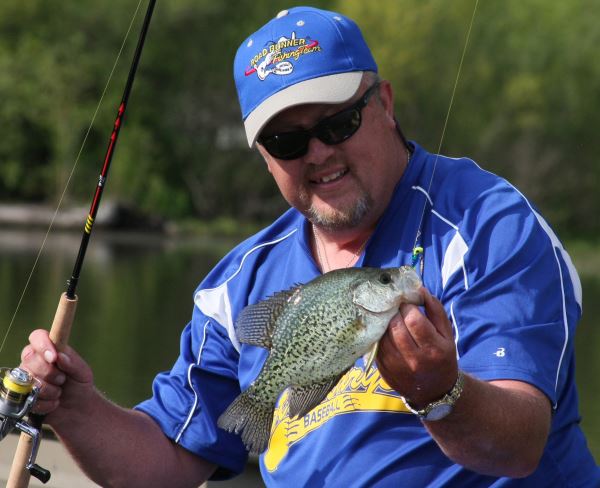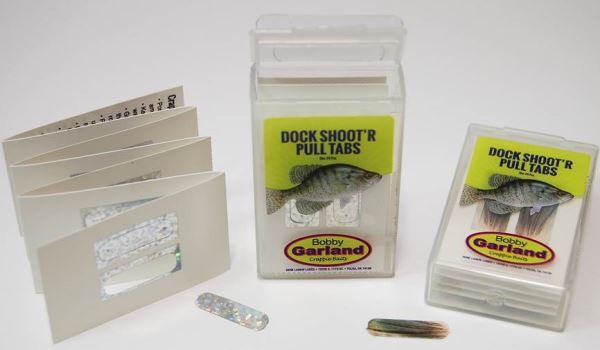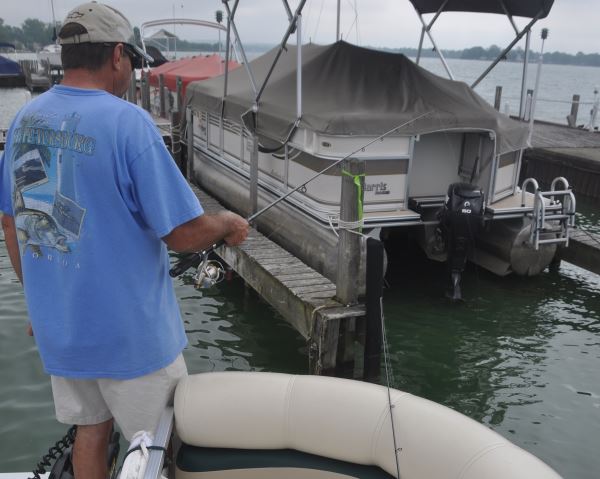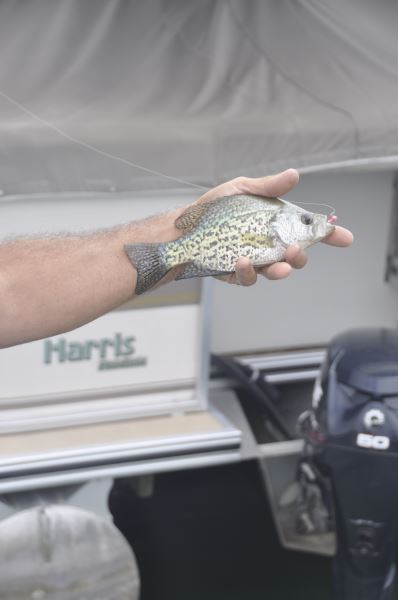
I learned the bow and arrow cast at age 9 from a book on fishing tips by the late Harold Sharp that I considered my Bible. We lost Hal at age 88 last September. His paperback, Sportsmen’s Digest of Fishing, featured simple pen and ink drawings to illustrate each idea and just enough text to hold the attention of a kid my age, and I knew that dog-eared book and the priceless lore it contained inside-out. The bow and arrow cast was one of my favorite skills learned from its pages, and I stuck my thumb plenty of times practicing the technique and conjuring up situations in which I’d actually get to use the radical cast. I actually considered it a trick cast for years—which is the way I used it for the most part—until I started reading about anglers using it in tight confines to ‘shoot’ lures under overhanging trees or to ‘skip’ baits across the water beneath boat docks.
 When I recently ran across a new-for-‘16 accessory designed to save fingers from errant shots and injury while putting the bow and arrow technique to use, I knew it had hit the mainstream.
When I recently ran across a new-for-‘16 accessory designed to save fingers from errant shots and injury while putting the bow and arrow technique to use, I knew it had hit the mainstream.
The Right Technique
If you go online to learn how to execute a bow and arrow cast, you’ll see that it has been embraced by the fly fishing crowd, and most of the references and videos show it being performed with fly tackle. The technique is pretty much the same when used with spinning and spincast gear. I’m not sure it would work with baitcasting tackle, and I’m not about to try.
The bow and arrow cast is but one casting method that bass and crappie anglers have adopted for getting baits back underneath boat docks and even between the logs of individual pontoon boats. They call it ‘skipping’ or ‘shooting’ and this time of year it’s especially productive for spring crappie anglers who know to look for fish that are attracted to the heat radiated by aluminum boat docks and pontoons that are warmed by the sun. The slightly warmer water draws baitfish and the gamefish such as crappie and bass that gather around to feed on them. Later in the season, bass anglers employ the skipping method to hook bass that have retreated to the docks for the opposite reason: the shade actually helps those waters stay cool and provides the predators excellent ambush cover.
Skipping is a way to get baits into the darkness way back between pilings, areas that are inaccessible by any other method short of using a circular saw and vertical ice fishing-type presentations, which will not endear you to the dock owner.
 Finding Them
Finding Them
According to bass pro and veteran dock skipper Kevin Hawk, in the summer the bass are typically in one of two places. They're either deep, hanging around the thermocline, or they're in shallow, shady cover, like heavy vegetation or under boat docks.
Docks are one of Hawk’s favorite cover types because they offer bass lots of shade and usually hold panfish or other bait for the bass. If the dock has brush under it and is near deep water, it's even better—for both summer bass and spring crappies.
Once you learn to skip effectively, says Hawk, you can put a bait in places most other anglers can't, and you'll be presenting your baits to bass that rarely see a lure.
Favorites
Hawk’s favorite bait for skipping is a 5-inch Yamamoto Senko in green pumpkin with large black flake (#297) or black with blue flake (#021). He recommends green pumpkin in just about any water clarity and black with blue flake in roiled water.
 When dock fishing, he rigs the Senko weightless and “wacky” style with a 1/0 Owner Weedless Wacky Hook. Hawk uses spinning tackle spooled with 15-pound-test Seaguar Kanzen braid and a 5 1/2-foot leader made of 15-pound Seaguar fluorocarbon on a medium heavy rod with a fast tip that offers the short, snapping action that helps to effectively cast and skip a bait. You also want a rod with plenty of backbone so you can make a good hook-set and get a bass out from under the dock and away from cover quickly.
When dock fishing, he rigs the Senko weightless and “wacky” style with a 1/0 Owner Weedless Wacky Hook. Hawk uses spinning tackle spooled with 15-pound-test Seaguar Kanzen braid and a 5 1/2-foot leader made of 15-pound Seaguar fluorocarbon on a medium heavy rod with a fast tip that offers the short, snapping action that helps to effectively cast and skip a bait. You also want a rod with plenty of backbone so you can make a good hook-set and get a bass out from under the dock and away from cover quickly.
Skip It
The skip cast first touches the water at the front edge of the target—in our case, a boat dock or pontoon bow. Then it needs plenty of momentum to carry it under the cover. To do that you need to make a sharp, hard cast. It’s like skipping a stone: you need to make a sharp, hard toss to give it the speed and angle to skip it across the water’s surface.
To do so, stand on the bow deck of your deck or pontoon boat. Face the target and keep your back cast quick and low. Come forward with a snap and end with your rod tip pointed directly at the target—the water’s surface at the end of the dock you are trying to bounce off of and skip under. The lower the trajectory of the cast the better. You’ll see when you do it right, and your lure skips way back into the bowels of the dock. At that point it’s up to you to keep repeating that motion until you get the hang of it and can skip every cast.
 Shoot ‘Em
Shoot ‘Em
If you can’t master the skip, try the bow and arrow cast to shoot jigs directly back under docks. I’ve seen anglers lie down on the bow of their boat to get low enough to bow-and-arrow cast jigs up under docks and pontoon boats for crappie this time of year.
You'll learn quickly that weightless plastics are easier to shoot and skip than weighted baits, and that jigs are best for bow and arrow presentations. A crappie will take a jig almost immediately on the fall; if not, a steady retrieve or a twitch and drop will fool any hungry slabs that are in residence. When fishing a soft plastic for bass, you’ll want to let the lure drop to the bottom. If it twitches, set the hook. Once the bait is on the bottom, slowly lift the rod to get a tight line and lift the lure. If it feels mushy, set the hook. Continue the slow lift and drop retrieve until the lure clears the shade of the dock and then shoot another cast, moving down the docks as you pick off fish.
Skipping and shooting are especially easy casts to make off the wide, open bows of most deck and pontoon fishing model boats; give ‘em a try this season and see what they net you fish-wise.
www.bobbygarlandtackle.com